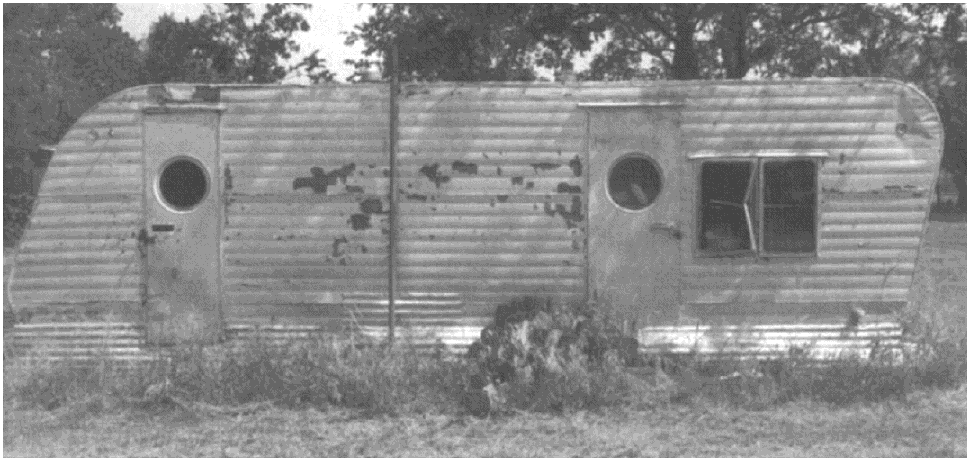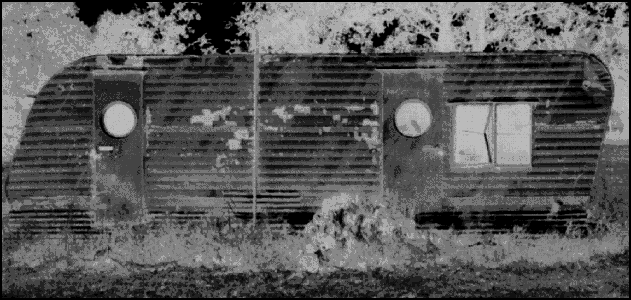
More Ghost Towns
Of Texas
T. Lindsay Baker
(Oklahoma)

What is it about these old, bedraggled, out-to-lunch, left-over, raw, naked, dying towns that is so attractive?These are places where people came 100 - 150 years ago to work and farm and live and dream and die, and suddenly their home-towns were dying along with the old: turning grey, bony, wizen.
Hackberry, Norse, St. Mary's of Aransas, Pyote, Frio Town, Danevag, Desdemona, Direct, Electric City, and Flomot, Texas. Dried-up, dried-out, wind-blown places where kids once ran around calling out to each other and old Gus worked the mule, profane Gus with his worn white shirt and pork-pie hat and his galluses.
And in the white frame house mother baked biscuits, made grits, fried bacon, singing low at the wood-burning stove about her and jesus; and grandmother living out her last days in the back room with her "dowager's hump" and the rheumatism (and her Sloan's liniment); and gramps hobbling out back (oh the lumbago) to sneak a few sips of white lightning that he kept in the Mason jar with the rusted screw-top, his secret warmth hidden in the hay in the darkest part of the barn. All gone, all gone --- not even the whispers of dust-devils to keep them (and us) company.
§ § § Not long ago, we reviewed Loompanic's Rancho Costa Nada: The Dirt Cheap Desert Homestead by Phil Garlington. Garlington told us that the only place in the United States you could find a place to buy for practically nothing was in the Arizona or California Sonoran Desert where you got baked in the summer and frozen in the winter and you had to worry about running out of gas on your way down the dirt road to the highway to Barstow because if no one came along for a week or so you would end up fried in the front seat of your pick-up. With an eerie grin.
Evidently, Garlington hadn't researched the dying towns of the Middle West. Towns like Ochiltree just off Texas State Highway 3045 where it meets Highway 70 where they built a courthouse in 1891 and became so prosperous by 1915 that you could find a movie house, a flour mill, two newspapers, a national bank, a hotel, and a community orchestra. And why did it die?
The Panhandle and Santa Fe Railroad built a new rail bypass eight miles north of Ochiltree, and the merchants went over to the new railroad line where they "could offer lower prices to their customers." The old town withered away "in just a few months," and where all those people danced their dance and sang their songs there is now nothing but an historical marker along with "ruined building foundations and a cemetery." And even the railroad company that created the death of the town is now defunct.
If it wasn't the railroads, it was depression or, later and more depressing, the mega-corporations moving in, given huge federal subsidies to run the small family farms out of business. Who would buy beans from the old man when Archer-Daniels-Midland would sell tons of beans for half the price that he needed just to feed the mule and bring home something for the kids? And soon enough even the kids were off in their jalopies to Houston or Oklahoma City where they could find work in the oil-fields, and evenings in the pick-up bars with the music of Bob Wills and His Texas Playboys. And they didn't have to go to Baptist Church every Sunday to listen to that smug Pastor Sterne, with the dandruff flakes on his black jacket, a man who could go on and on about Sin and Sinners, always spelled with a capital "S."
And don't forget the folk who lived in Wizard Wells, where the old ones with their sacroiliacs, came to soak in the hot waters until one day they, too, found the town disappearing and the hotel was shut down, torn down by the owner for the lumber and shingles ... and the old ones died off and the mineral water springs turned muddy and fetid, Baker tells us, because
of changed perceptions of healing. Americans learned in the early twentieth century about microbes and their role in causing illness. Physicians stopped prescribing mineral-water baths as new medications could give their patients similar results.
"Consequently fewer and fewer people came to the springs seeking cures. The population continued to decline, and Wizard Wells lost both its school and its post office in the 1950s."
§ § § Each of the more than ninety towns listed comes with map on how to get there, complete with pictures --- some from the early days of their glory or, more likely, pictures taken by the author of empty frame houses, flaking signs, rickety storefronts, deserted weed-drowned streets, graveyards fat with tumbleweed and toadflax.
The pictures are, as they should be, black-and-white and generous (more than 150); the text is amiable and fact-filled; the scholarship is impressive (large bibliography at the end papers); and the memories are almost all achingly sad.

--- L. W. Milam